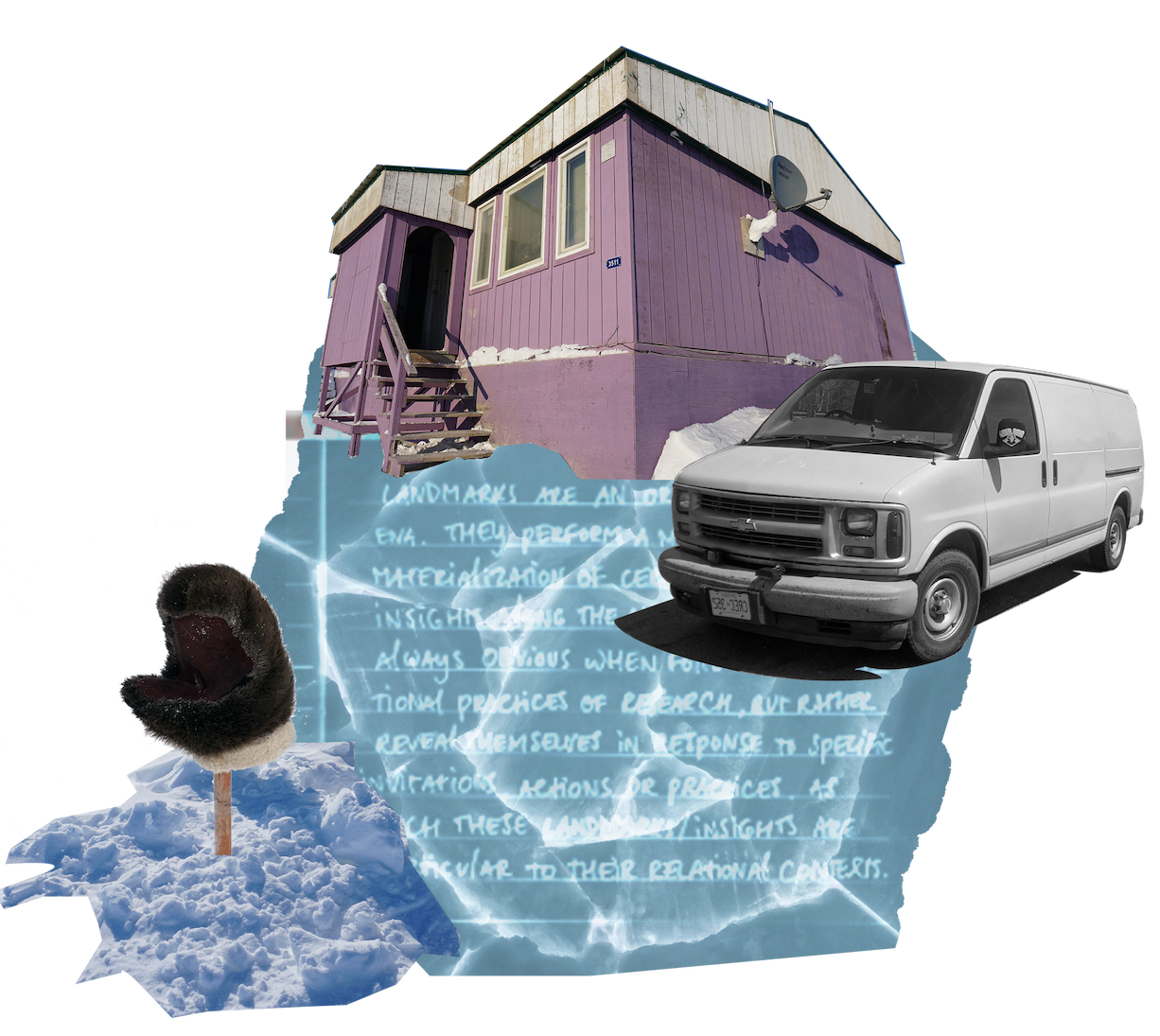Multiple Sites of Enunciation

The landmark, as a figure, has itself lots to teach us about how to acknowledge and relate to the tension of our differences, when it comes to our entanglements within the overarching polar bear management and monitoring apparatuses
The point here is not to argue whether or not we are looking at the same rock formation, and to agree on how it has changed over time. Neither is it the point that our subjective views change the way that the rocks present themselves to us.
The point here is that the rocks can are not determinable as separate from ourselves, our position in the landscape, where we have been and where we are going, when we consider ourselves part of the everchanging landscape. A practice of lateral movement unfixes the rocks as not just something than can be located out there, but rather as something that can also locate us, and the many other other material agencies that make it possible for us to encounter the rock formation.
